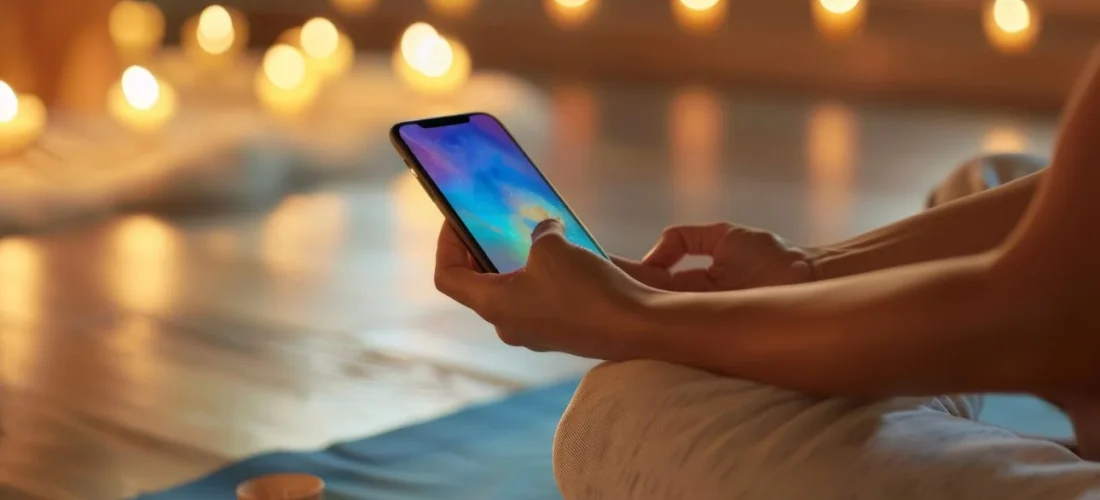In today’s fast-paced, always-connected world, it’s no surprise that mindfulness has gained popularity as a way to combat stress, anxiety, and digital overload. Ironically, one of the most popular tools for cultivating mindfulness is something many people are trying to escape—our smartphones. Over the past few years, digital mindfulness apps like Headspace, Calm, Insight Timer, and Balance have surged in popularity. But with so many options available, one important question arises: Do they actually work?
What Are Digital Mindfulness Apps?
Digital mindfulness apps are mobile or desktop applications designed to help users practice mindfulness, meditation, breathing techniques, and mental wellness. They often feature guided meditations, sleep stories, ambient music, journaling prompts, and real-time progress tracking. Many even incorporate behavioral science techniques, gamification, and AI to personalize the user experience.
The goal? To bring mindfulness into your everyday routine—whether it’s a five-minute breathing break during a hectic workday or a calming meditation before sleep.
Why Are They So Popular?
Several factors have contributed to the rise of digital mindfulness apps:
- Accessibility: Anyone with a smartphone can download and begin practicing mindfulness without needing to attend a class or retreat.
- Affordability: Many apps offer free versions or trials, making them more budget-friendly than in-person sessions.
- Time-Efficiency: With sessions ranging from 1 to 30 minutes, users can fit mindfulness into even the busiest schedules.
- Stigma Reduction: Using an app makes mindfulness more approachable for those hesitant about therapy or mental health resources.
The COVID-19 pandemic also played a pivotal role in accelerating adoption. With heightened stress levels and limited access to in-person support, people turned to tech-based solutions for emotional relief and mental clarity.
Do They Actually Work?
This is where it gets interesting. Several studies suggest that mindfulness apps can be effective—but with a few caveats.
- Short-Term Benefits: Research shows that even brief daily use of mindfulness apps can improve mood, reduce stress, and enhance focus. A 2019 study published in JMIR Mental Health found that using Headspace for just 10 minutes a day led to reduced stress and improved well-being after only 10 days.
- Consistency Matters: Like most habits, consistency is key. The real benefits emerge with regular practice over time, which means the user must be disciplined and motivated.
- Not a Replacement for Professional Help: While mindfulness apps are useful for general stress management and relaxation, they’re not a substitute for therapy or mental health treatment when deeper issues are at play.
- Quality Varies: Not all apps are created equal. Some are backed by science and developed with input from mental health professionals, while others rely more on aesthetics and vague promises. Choosing a reputable app is crucial for effective results.
Potential Downsides
Interestingly, using a digital app to achieve “mindfulness” can sometimes feel counterintuitive. Constant notifications, screen fatigue, and the pressure to track progress can detract from the simplicity and spontaneity of mindfulness.
There’s also a risk of turning mindfulness into another task to check off a list, rather than a moment of presence and self-compassion. If not approached thoughtfully, users may end up feeling guilty for skipping sessions, which defeats the purpose.
So, Should You Use One?
If you’re looking to build a simple, consistent mindfulness routine, digital mindfulness apps can be a great tool—especially for beginners. They provide structure, guidance, and accessibility that can make it easier to start and maintain the habit. Just remember to use them as tools, not crutches.
In the end, the most important part of mindfulness isn’t the app—it’s your attention. The app is just a bridge; what really matters is your willingness to pause, breathe, and reconnect with the present moment.
So yes, digital mindfulness apps can work—if you work with them.
Get more details from these resources :
https://homeimprovementcarmel.com/
https://mabsnews.com/
https://dunyapaknews.com/
https://kentraveling.com/
https://indihomekeluarga.com/
https://sportsnewsriet.com/
https://kodangnews.com/
https://cloudsnewsnetwork.com/
https://aworkforce.org/
https://floornhome.com/
https://basementlighting.org/
https://newcarreleasenews.com/
https://shaheennewstv.com/
https://almodonnews.com/
https://registercents.com/
https://newsarenas.com/
https://rkvnews.com/
https://keralanewsonline.com/
https://buuhoodlenews.com/
https://homedecorfurnitureandaccessories.com/
https://webtotalfitness.com/
https://tinafashionsaigon.com/
https://floridahealthsite.org/
https://askmeforum.com/
https://theclevelandhomecoming.com/
https://jcarettrealestate.com/
https://idealnewstv.com/
https://univetmedicine.com/
https://muraipokertop.com/
https://newslead.net/
